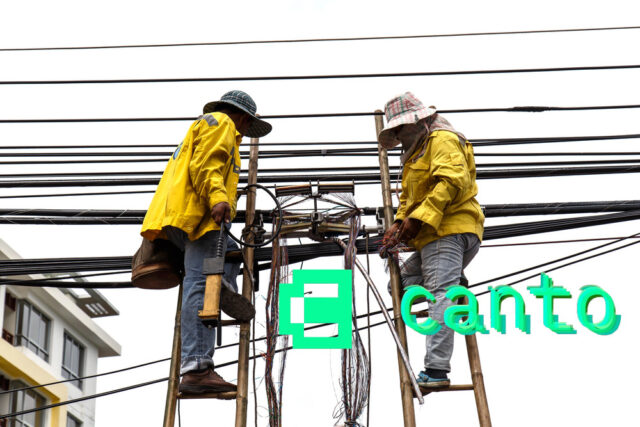Canto, a promising Layer 1 blockchain within the decentralized finance (DeFi) ecosystem, faced a significant disruption this past weekend that has captured the attention of the blockchain community. The network, which operates on the Cosmos SDK, experienced a 33-hour outage following the deployment of its “Callisto” upgrade. This incident, rooted in a consensus failure, halted all transactions on the Canto network, underscoring the intricate challenges of scaling blockchain technology.
The Outage: What Happened?
The outage began on August 10, 2024, shortly after Canto introduced the Callisto upgrade. This significant update is intended to enhance the network’s capabilities. However, shortly after the upgrade’s implementation, the network encountered a consensus issue – a critical failure in the mechanism that ensures agreement across the blockchain on the state of transactions. As a result, all activity on the Canto blockchain came to an abrupt halt. It did not process any transactions for more than 33 hours.
The Canto team quickly acknowledged the issue, communicating via social media that user funds were secure despite the disruption. They assured the community that the problem was under investigation and that they were preparing a resolution. On August 12, the team deployed a fix aimed at restoring network functionality, allowing transactions to resume.
Technical and Developmental Challenges
This incident has highlighted the inherent risks and challenges associated with blockchain development, particularly in the context of deploying major updates. Consensus mechanisms are foundational to blockchain operations. They ensure that all nodes in the network agree on the state of the ledger. When a consensus mechanism fails, as it did in Canto’s case, it can bring the entire network to a standstill. Such a halt affects all users and applications dependent on it.
For Canto, the Callisto upgrade was a step towards greater scalability and enhanced performance. Unfortunately, the unforeseen consequences have revealed the delicate balance between innovation and network stability. Blockchain technology is celebrated for its decentralized and immutable nature. However, these same characteristics can make resolving issues more complex compared to centralized systems. The incident serves as a reminder that even as blockchain projects push the boundaries of what is possible, they must do so with caution. They must ensure that the foundations of the network remain robust.
Market and Community Response
Despite the significant disruption, the market’s reaction to the outage has been relatively measured. The CANTO token, which saw an initial drop in value, has shown resilience. Its price recovered after the network was restored. This response suggests that the community’s confidence in the project remains intact. This was likely bolstered by the transparent communication from the Canto team and the swift action taken to address the issue.
The outage also sparked discussions within the blockchain community about the importance of thorough testing and phased rollouts for major network upgrades. As Canto continues to evolve, this outage incident may serve as a valuable learning experience. It will guide future developments and upgrades to ensure greater stability and reliability.
Conclusion
The 33-hour outage on the Canto blockchain is a clear example of the growing pains that innovative projects in the blockchain space often experience. While the incident was disruptive, it has also provided crucial insights into the challenges of scaling and maintaining a blockchain network. As Canto moves forward, the lessons learned from this episode will likely shape its approach to future upgrades, reinforcing the importance of balancing innovation with the need for a stable and secure network foundation.
>>> Read more: Inside the WazirX Hack: How Lax Security Practices Led to a $230M Cryptocurrency Theft
In the rapidly evolving world of blockchain technology, such setbacks are not uncommon. How a project responds to these challenges can determine its long-term success. Canto’s handling of the situation, particularly its commitment to transparency and swift resolution, may well bolster its reputation as a resilient and forward-thinking player in the DeFi space.
Readers’ frequently asked questions
What exactly is a consensus mechanism, and why is it so important for a blockchain like Canto?
A consensus mechanism is a fundamental process used in blockchain networks to achieve agreement among distributed nodes on the validity of transactions. It ensures that every transaction recorded on the blockchain is agreed upon by the majority of network participants. Thus, it maintains the integrity and accuracy of the ledger. In the context of Canto, the consensus mechanism is crucial because it prevents double-spending. It ensures that all nodes reflect the same transaction history, and ultimately maintains the decentralized nature of the network. When a consensus failure occurs, as it did during the Callisto upgrade, it compromises the network’s ability to process transactions. That leads to potential outages or disruptions, as seen with Canto’s 33-hour downtime.
How common are such outages in the blockchain space, and what do they typically indicate about a project?
Blockchain outages, while not common, do occur, especially during significant upgrades or when a project is still in its developmental stages. These outages often indicate underlying technical challenges, or issues with the network’s infrastructure. However, they do not necessarily suggest a fundamental flaw in the project. Many well-known blockchains have experienced similar disruptions, particularly during rapid growth periods or after implementing major updates. For Canto, the outage highlights the challenges of scaling and maintaining a Layer 1 blockchain. However, the swift response by the development team and the community’s continued support suggest that the project is still on a solid footing. Outages like these are often seen as part of the learning and growth process in emerging blockchain networks.
What measures could prevent future outages, and how might Canto apply these lessons moving forward?
To prevent similar outages in the future, blockchain projects like Canto can implement several best practices. One key measure is conducting extensive testing of new upgrades in a controlled environment before deploying them on the main net. This can help identify and resolve potential issues before they impact the broader network. Additionally, adopting a phased rollout approach, and introducing updates gradually can minimize the risk of widespread disruptions. Enhanced monitoring tools and real-time alerts can also help the development team quickly identify and address any issues that arise. Moving forward, Canto is likely to incorporate these strategies to ensure greater stability and reliability during future upgrades, helping to build trust and confidence among its users
What Is In It For You? Action Items You Might Want to Consider
Monitor Upcoming Upgrades and Network Changes
Stay vigilant about announcements from the Canto team or any other blockchain project you’re invested in. Network upgrades, like the Callisto update, can sometimes lead to unexpected issues, including outages. By keeping an eye on these developments, you can make more informed decisions, such as temporarily reducing exposure or adjusting your trading strategy to mitigate potential risks during periods of instability.
Evaluate Market Sentiment and Token Resilience
Use the recent recovery of the CANTO token as a case study in market resilience. Despite the network outage, the token’s price rebounded, suggesting strong community support. Analyze how similar disruptions have affected other tokens in your portfolio. If a token shows signs of strong recovery after technical issues, it may indicate robust underlying fundamentals and a loyal user base, which are crucial for long-term investment potential.
Consider Diversification in Blockchain Investments
The Canto outage highlights the risks associated with investing in newer, innovative blockchain projects. While these projects can offer high rewards, they also come with higher risks, including technical failures. To balance your portfolio, consider diversifying your investments across more established blockchains and other asset classes, which can provide stability while still allowing you to benefit from the potential growth of emerging technologies.










